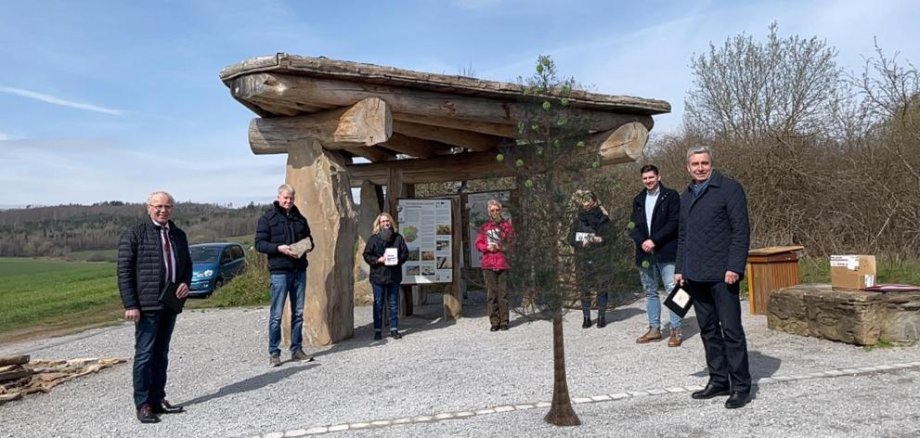Geopark GrenzWelten implements new augmented reality project
Anyone who has always wondered what the so-called Frankenberger Kornähre looked like, which grew 250 million years ago in the area of today's Hohenäcker quarry, has been getting a visual answer since the beginning of April. All you need is a smartphone with a QR code scanner and a trip to the geostation on the road from the core town of Frankenberg to Rengershausen, directly at the turnoff to Rodenbach. There, the GrenzWelten National Geopark, in cooperation with the software developer MT INTERTEX GmbH from Frankenberg-Schreufa, the building yard of the town of Frankenberg and the Ederbergland Tourist Board, has implemented a new augmented reality project that brings the fossil plant to life in a lifelike manner.
Under the motto "Bringing the past to life!", Procynosuchus, the most prominent inhabitant of the Korbach crevice in the Permian period, saw the digital light of day last summer. Since then, the prehistoric dachshund has been scanned and uploaded to smartphones 1,600 times, reports Sebastian Freitag from the software developer MT Intertex. Not least the good experiences with the virtual Procynosuchus have encouraged the Geopark to tackle further projects in augmented reality, adds Geopark Manager Kim Peis. The Frankenberg corn ear in the Hohenäcker quarry is now the second such offering in the GrenzWelten.
On a short tour through the quarry, interested visitors can learn interesting facts about the prehistoric Zechstein Sea with its delta system and about the corn ear as a unique representative of the plant world from the Upper Permian period around 250 million years before our time at three stations, each with a QR code. This way, the fossil site can be explored without a guided tour and the information can be taken home on the smartphone. The QR codes are an attractive door opener into the world of the Geopark, especially for younger people, and bring the exciting finds of the GrenzWelten close in a playful way.
Frankenberg's mayor Rüdiger Heß thanks the Geopark and the software developers that through their efforts the local region of 250 million years ago is now made visible. The former brickworks of the Bötzel company, today's Hohenäcker quarry, was still active into the 1990s and it is nice to see it now filled with life again with the virtual corn ear. "Please continue in exactly the same way!" Mayor Heß wishes, addressing the Geopark.
District Administrator Dr Reinhard Kubat agrees with this request and, of course, with the thanks - the Hohenäcker quarry is now twice as worth a visit thanks to the plant fossil that has come to life digitally. The district administrator also sees the Geopark's commitment as important in another context: "The Corona pandemic will be over at some point, but the challenges of climate change remain and need our full attention. For this reason, he said, he had set up a "climate change team" at the district administration, of which Geopark Manager Kim Peis was also a member. In order to bring the important topics of the Geopark closer to an even larger group of interested people, for example, multilingual information boards in English and Dutch could be considered. "Bringing the past to life and at the same time preserving what is alive today should be our common goal," the district administrator concluded.
